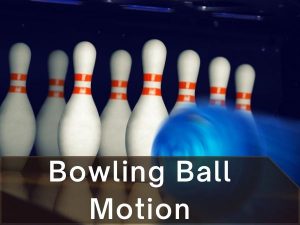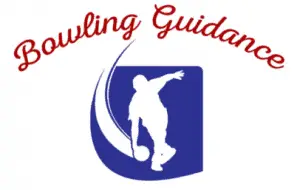 Understanding bowling ball motion will greatly impact your decision before you purchase your next bowling ball. USBC has been studying bowling ball motion for decades and still doing. With modern advancements and the varieties offered by manufacturers, it is often hard to make a final decision. This article will guide you to understand all the aspects are related to your ball’s motion. Let’s learn about that in detail.
Understanding bowling ball motion will greatly impact your decision before you purchase your next bowling ball. USBC has been studying bowling ball motion for decades and still doing. With modern advancements and the varieties offered by manufacturers, it is often hard to make a final decision. This article will guide you to understand all the aspects are related to your ball’s motion. Let’s learn about that in detail.
How to Understand Bowling Ball Motion
Understanding the motion of a bowling ball is derived by examining the path a bowling ball uses to travel down the lane. These researches and examinations are observed and often done by the United State Bowling Congress (USBC). According to USBC, when a player releases his/her bowling ball four different sorts of forces combine and present the desired ball motion. They are—
- Bowling ball speed
- Bowling ball’s rev rate
- Bowling ball axis tilt
- Bowling ball axis rotation
Bowling ball speed
Speed dominant bowlers tend to focus more on how fast their balls travel down the lane than on the rev rate. That’s why speed dominants like balls with aggressive layouts and surfaces to pick it up sooner. Rev dominant bowlers on the other hand prefer slower ball speeds with less aggressive balls to prevent overreaction. Since the lane is a flat surface, your bowling ball can lose 3-5 mph every time you throw it. If you want to test it yourself, just look at the score monitor and the speedometer clock will show how much deceleration has taken place.
Ball rev rate
The rev rate of a bowling ball indicates the number of revolutions you impart on it. Rev rate bowlers have high RPM (revolutions per minute), and vice versa for low rev bowlers. Based on your rev rate, you can be in one of these three categories: stroker, tweener, and cranker. To understand ball motion better, it is important to know the ball’s rev rate and its connection with your ball speed, as well as axis tilt/rotation. This surely specifies the kind of ball and the method you need to follow to play better.
Axis tilt of bowling ball
Do you see your bowling ball rotating at a vertical angle? That is the axis tilt of your ball. In general, it depends on the position of your thumb during the ball release. If you turn your hand too early, you let go of the top of your ball. The higher the degree of axis tilt, the more you will see the top of your hand as you begin the follow-through during the ball release. This works as a great disadvantage as it reduces the backend potential. The opposite happens when the thumb hole is located at the bottom. During ball release, it lowers the degree of your axis tilt and as a result, it enters the roll phase before the pins are hit.
Axis rotation of bowling ball
This is almost similar to axis tilt, except axis rotation is the horizontal measurement of the ball’s revolution angle. While the axis tilt is commonly referred to as ‘spin’, axis rotation is referred to as ‘side roll’. When the axis rotation of your ball is 0°, it reduces the entire bowling ball hook potential no matter how high-performing it is. Higher axis rotation (90°) makes the bowling ball skid further and an angular hook at the breakpoint. Bowlers with high axis rotation prefer dry conditions, whereas players with low axis rotation will prefer medium to heavy oil conditions.
As many of you know— first, bowling balls skid, then it goes to the hook phase and then comes the rolls. When your shot has less axis rotation, the skid phase will get shortened and will enter into the hook phase quite earlier. This will completely jeopardize the ball’s hooking ability. It is important to understand why low or high axis rotation matters. If you can manipulate the degree of your axis rotation, you can significantly change the ball’s motion and reaction according to your target and advantage.
The Ball Motion Study claims that there are a few more things that contribute to the bowling ball motion. Those are—
- Ball dynamics (mass properties)
- Coverstock/ surface
- Static weight balance
A bowling ball’s dynamics tell a lot about its ball motion. Why? Well, the mass properties of a bowling ball define a ball’s dynamics. And what indicates a ball’s mass properties? The chore shape and its density. The level of coverstock’s aggression is also another factor that is highly related to this. The motion of your bowling ball also depends on the RG value (Radius of Gyrations) and the total differential value. These factors I have just mentioned determine the location of your ball’s first transition on the lane.
Another important factor of bowling ball motion is the ball’s surface/coverstock. This chemical composition has an upper hand to decide the ball reaction and motion on the lane. As you know friction minimizes ball speed. So when you use a low grit bowling ball, it is wise to play it on an oil pattern, and oppositely, when your ball has high grit, dry-medium lanes are good to use. Don’t forget to check what the manufacturers are recommending though.
Once you have found your perfect bowling ball with the right coverstock and core type, time to take a look at its static weight balance. The static weight balance dynamic is greatly correlated with the drilling layout pattern. The ball drilling technique actually consists of both the size and location of the balance hole (if your ball needs one) and the drilling layout. Remember, this is the final factor that is often overlooked but it is extremely important to achieve the desired ball motion and reaction.
Four Types of Bowling Ball Motion
First, answer me this— did you know there are different types of bowling ball motion? You may have heard about only 2 or 3 types. But there are actually 4 of them and each motion is quite different from the other one.
1. Traction:
The first kind is traction. What traction ball motion is when your bowling ball hooks early and it is very late down the lane during the rest of its journey till it hits the pins.
2. Continuation:
The second ball motion is called continuation. That is the most popular one as this is what people tend to want to get. On this particular motion, your bowling ball continues to make the move as it goes down the lane. You will see a much rounder shape at the breakpoint (in the midlane). So the hooking takes place a bit earlier.
3. Angular:
On the third, we have the angular ball motion. This motion can be seen when your bowling ball makes a much sharper and angular motion at the breakpoint. The ball goes very long down the lane and then makes a very hard change in direction before it goes into the pockets.
4. Straight:
Lastly, the ball motion that saves everyone’s life- straight ball motion. It is typically used to shoot the spares. Beginners also use this method with their entry-level bowling balls to knock down the maximum number of pins. To pick up the potential spares, this straight ball motion is a lifesaver.
Conclusion
The science behind a bowling ball’s motion is very complex. If you fully want to understand it, you have to know geometry, physics, and ever chemistry too. I have explained things here as scientifically as possible. The information is also easy to understand so that anyone can easily get what I’m talking about. If you are reading this before getting your ball drilled, I would recommend you go to a local pro shop and consult a professional before you select the drilling layout. If possible get it done by them, if you have never drilled a ball before. Other than that, you keep doing what you love to do. See you soon, fellas!

